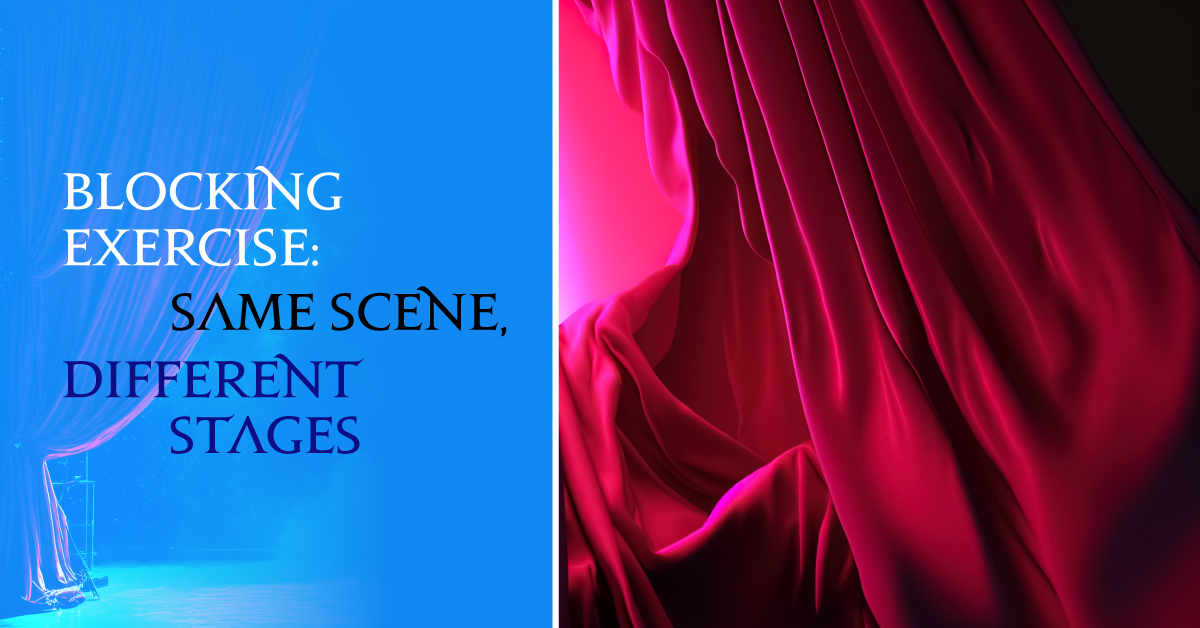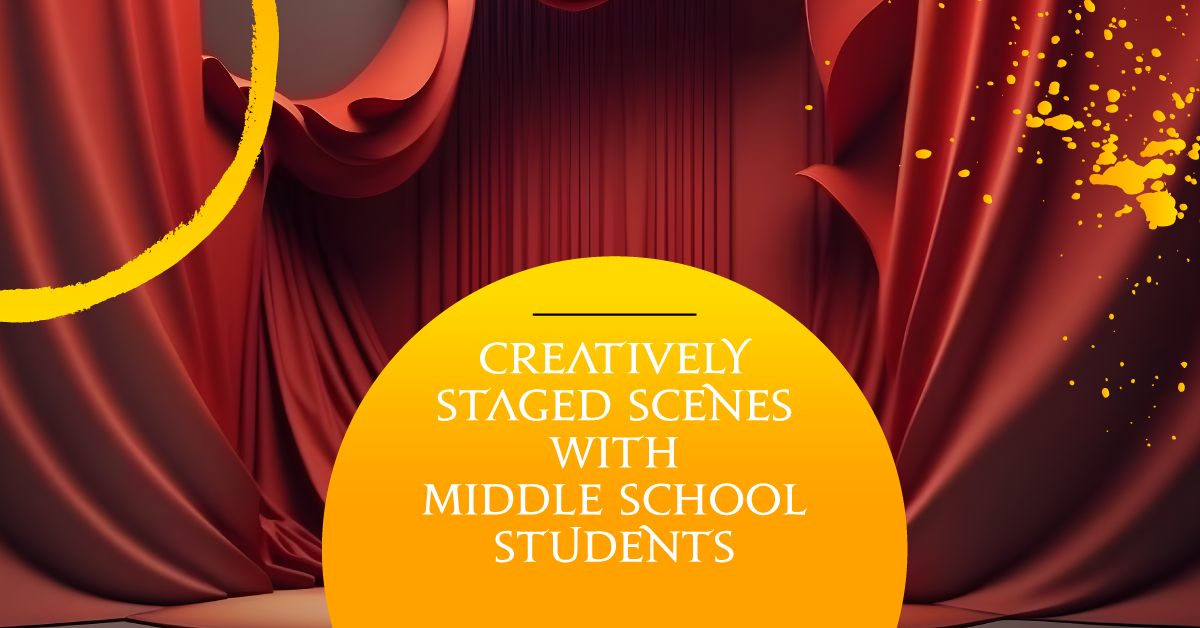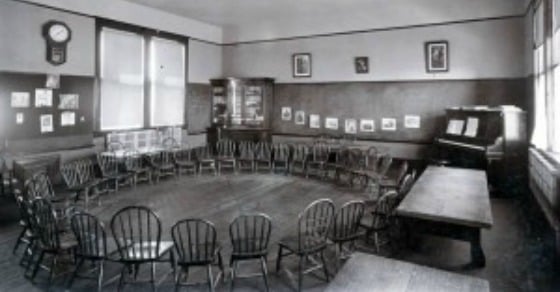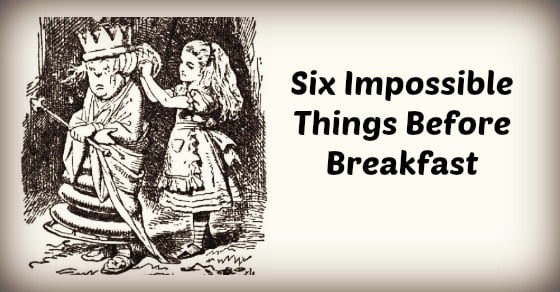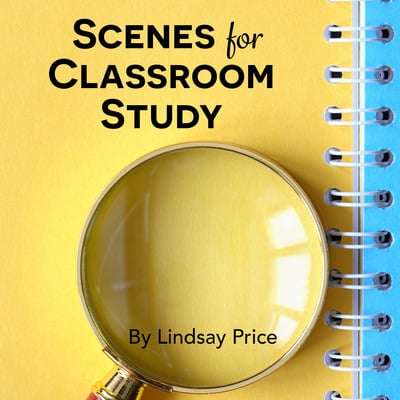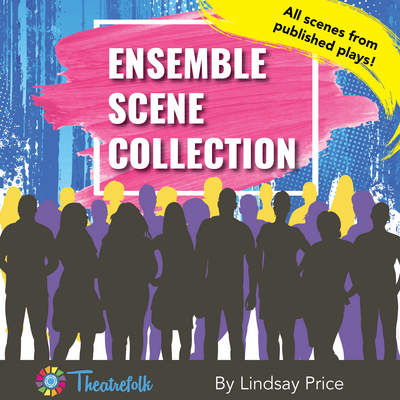Blocking Exercise: Same Scene, Different Stages
When students are presenting scenes in drama class, the most typical setup is actors on one side of the room with the audience facing them on the opposite side, like a typical proscenium arch stage. However, there are other exciting stage setups to explore, which provide different staging opportunities and challenges.
In this exercise, students will have the opportunity to block and perform a scene in three different stage setups: proscenium stage, traverse stage, and theatre in the round.
As a refresher, here’s a quick description of the three stage setups referenced above:
- Proscenium stage: stage facing the audience, straight on
- Traverse stage: stage is surrounded on two sides by the audience
- Theatre in the round or arena stage: stage is surrounded by audience on all sides
Start by presenting sample images of the three listed stage setups, or have students do an online image search of them. Discuss the visual differences between the different stages, as well as potential opportunities and challenges each stage presents for the actors, directors, and audience. For example, on a traverse stage you could choreograph some amazing battle sequences or have two distinct sets on either end of the playing space, but you may be limited in the number of entrance and exit routes available. Theatre in the round creates a very cool, intimate atmosphere for the audience, as they’re typically quite close to the playing space, but it can be challenging to block actors so they don’t always have their backs to the audience.
There are three different ways you can approach the practical portion of this exercise. How many students you’ll need to be actors and directors will depend on which method you select.
1. Two-day, one-scene option: This option takes fewer class days and gives a good general overview of how scenes have to be adapted to accommodate the different stage setups. Divide the class into multiples of three groups labelled A, B, and C. (For example, if you have 18 students, you might wish to have three groups of six students or six groups of three students. If you go with six groups, there will be two Group As, two Group Bs, and 2 Group Cs.) All groups will perform the same scene but on different stages. Groups A will perform their scene in a proscenium setup; Groups B will perform in the traverse stage setup, and Groups C will perform in the round. Depending on the number of students and the number of roles in the scene, you may wish to assign student directors within the groups or have the students block the scenes themselves. When students aren’t performing, they will act as the audience/analysts.
2. Six-day, multiple-scene, deep dive option: This option requires at least six classes, depending on the number of students you have (if you have a large class, you may need more performance days), but each group gets the opportunity to perform their scene in each of the three different stage setups. Divide students into small groups. Have each group select one scene. Each group should have a different scene and they will each perform their scene three times. On Day 1, each group will block and rehearse their scene for a proscenium stage. On Day 2, each group will present their scene. On Day 3, each group will block and rehearse their scene on a traverse stage setup, and they will perform on Day 4. On Day 5, each group will block and rehearse their scene in the round, and they will perform on Day 6. When groups aren’t performing, they will act as the audience/analysts.
3. Focused group option: If you have students who wish to do a deep focus on just acting, directing, or analysis, this can be a good option. It’s also an option if you have drama students who do not wish to perform. Select one group of actors (depending on how many roles are in the scene) and three directors. Each of the three directors will be assigned one stage setup (proscenium, traverse, in the round) and will block the actors to fit the stage setup. The actors will perform the scene three times, once in each stage setup. The rest of the group will be the audience/analysts.
Once all the groups have performed, have the groups reconvene for a discussion and/or have students respond to any or all of the following questions individually:
- For each scene: What worked well? What didn’t work well? Why?
- In your opinion, which stage setup was most effective for the scene? Why?
- If you had the chance to redo your scene with a different stage setup, which one would you choose? Why? OR (for Option 2) Which of the stage setups did you think worked best for your scene? Why?
- For each group: What were the advantages or opportunities of your particular stage setup? What were the disadvantages or challenges? How could you overcome these challenges if you were to stage the scene again?
- If you were to stage a full production of the play that this scene came from, which stage setup would you choose? Why?
- What other stage setups or venues would you like to explore or try staging your scene in? (For example, a thrust stage, outdoors, the library, the school basement, etc.)
In the last five minutes of class, have students respond to and submit one of the exit slip questions, found in the giveaway below.
Additional Resources:
Staging Your Show: “Same Show, Different Stages” Exercise
“Cheating Out”: Two Games for Middle School Drama Students
Free two-person and group scenes from Theatrefolk
Related Articles
Scenes for Classroom Study
by Lindsay Price
Scenes for Classroom Study consists of scenes from published Theatrefolk plays and is designed to help with character study, scene work, substitute teachers, performance, Individual Event competitions and so much more.
Ensemble Scene Collection
by Lindsay Price
Looking for quality scenes for your ensemble that haven't been done a million times? This Ensemble Scene Collection contains 33 scenes from published plays - great for competition and classwork!
